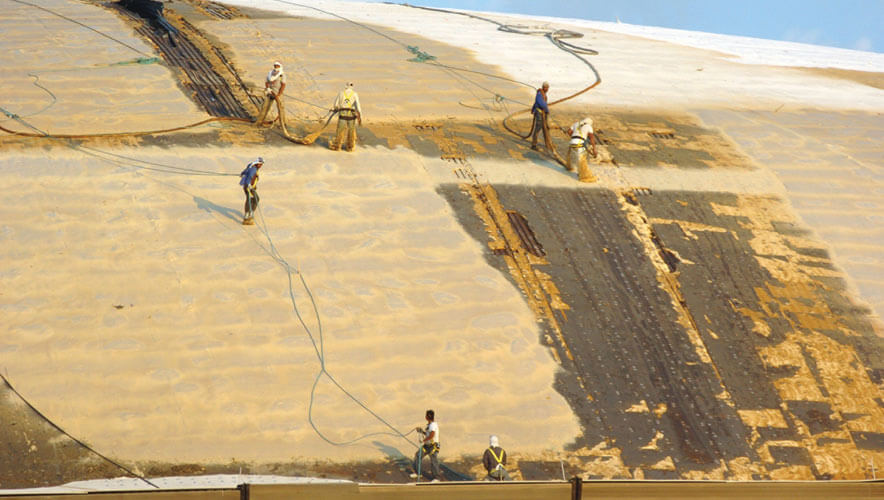Resilience After Katrina
A decade ago, New Orleans was hammered by Hurricane Katrina. The Gulf Coast storm measured roughly 400 miles across when it hit land, with winds of more than 100 miles per hour. The aftermath was also catastrophic, with devastating flooding and hundreds of thousands of people displaced. Damage estimates exceeded $100 billion.
A decade later, although it still faces its share of struggles in rebuilding, New Orleans has emerged as a model of resilience, with many of those displaced returning to rebuild the city in the wake of the storm. Now, the city has decided to formalize its resilience into a concrete roadmap and strategic plan, called Resilient New Orleans, which will guide efforts to continue rebuilding the city and make it more prepared for the next natural disaster.
"Now, the opportunity is to position New Orleans as a global leader on resilience. The people of New Orleans are a profile in resilience, but more must be done to adapt to new and forthcoming challenges," New Orleans Mayor Mitchell Landrieu said when the initiative was announced last summer.
The Resilient New Orleans strategic plan lays out a host of actions that the city hopes to implement so that it can better withstand, respond to, and recover from natural disasters and other challenging events in the future. Among other things, it features partnerships with private companies and nonprofit organizations to build various infrastructure projects.
For example, the plan calls for implementing a comprehensive storm water management system via a partnership between the city and various expert groups and firms, including the Trust for Public Land, the Dutch water management company Deltares, and the Greater New Orleans Foundation. The new system would be designed to complement the traditional drainage infrastructure of pipes and pumps by adding green technologies that could do things like trap usable storm water in landscaped spaces.
Under another partnership in the plan, the solar company PosiGen Solar Solutions and other partners will install a photovoltaic cell array with battery backup modules in the New Orleans City Hall complex to reduce strain on the electric grid and provide backup in case of system outages.
In addition, the plan takes an unusually broad approach to the concept of resilience. Besides infrastructure improvements, it also includes several financing initiatives to assist businesses, homeowners, public facilities, and private citizens who are experiencing a financial crisis.
"Being resilient means more than having levees and wetlands to hold back water," Landrieu said. "To be a truly resilient society means also combating the longstanding generational challenges around crime, education, and income inequality."
For instance, the city is partnering with the Walmart Foundation and the United Nations Office for Disaster Risk Reduction to develop a small-business resilience initiative that would provide technical assistance to small businesses to assess their preparedness and identify where they can improve their economic stability.
Other examples of financial programs in the strategic plan include a risk transfer initiative for infrastructure recovery that would deploy private-market assets to repair critical systems after a disruptive event. Partners for this initiative include the reinsurance company Swiss Re and the environmental solutions company Veolia.
For individuals, the city plans to work with the Foundation for Louisiana on launching an emergency account initiative, a savings-matching program along the lines of an Individual Development Account for low- and moderate-income earners to set aside funds for use in a crisis.
And, to bolster the concept of New Orleans as a model of resilience, the plan calls for the establishment of a centrally located Resilience Center in New Orleans that would serve as a hub for resilience innovation and leadership development. Partners on this initiative include the Rockefeller Foundation, Tulane University, and the American Institute of Architects.
Besides underlying its claim as a unique model of resilience, the recent history of New Orleans has also inspired an international resilience project, 100 Resilient Cities (100RC), which was initiated by the Rockefeller Foundation to help build resilience in cities around the world.
Like Resilient New Orleans, 100RC takes a broad approach to resilience, so that it includes not just preparing for recovery from natural disasters like storms, earthquakes, and fires, but also the stresses that weaken the fabric of a city on a day-to-day or cyclical basis.
So far, 67 cities around the world have been selected as members, meaning that 100RC will provide them with resources to build resilience. The group plans to do this in four main ways: provide financial and logistical guidance for establishing a new city government position, the chief resilience officer; provide expert support for development of a resilience strategy; provide access to services and partners from the private and public sectors to help develop those strategies; and provide membership into a global network of cities that can learn from and assist each other.
"New Orleans was the inspiration behind 100 Resilient Cities, and it was the impetus for our hallmark innovation: the chief resilience officer," said Judith Rodin, president of the Rockefeller Foundation, when Resilient New Orleans released its plan. "The importance of having a central point of contact for resilience building cannot be overstated."
According to Rodin, 100RC learned several key lessons about resilience building from New Orleans' experience with Katrina and its rebuilding. One was no matter how well a city plans and prepares, resilience depends largely on the strength of a city's social bonds.
"When Hurricane Katrina hit, it revealed decades of racial and class tensions," Rodin wrote in a recent essay published online by 100RC. "These wounds do not heal overnight, but because the city has embraced resilience, efforts to build social cohesion to ensure all communities are included in the city's revitalization have taken center stage."
"Ten years ago, the city was on its knees," she wrote. "Today, it's soaring, providing a model for cities all over the world, and institutions like ours, on what resilience truly means."
